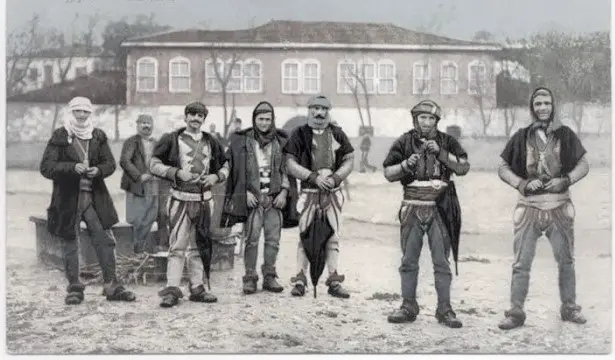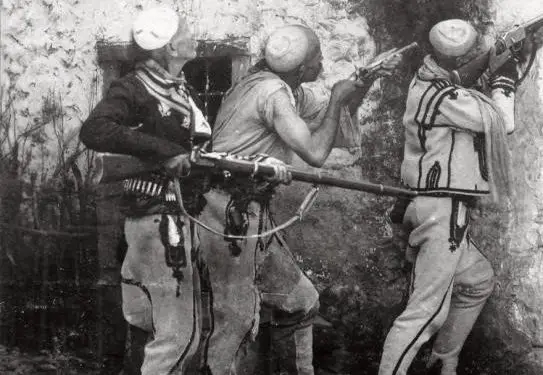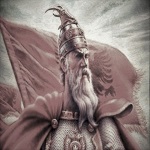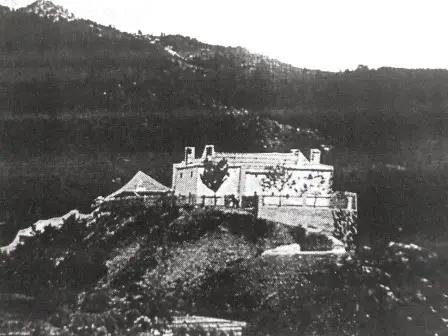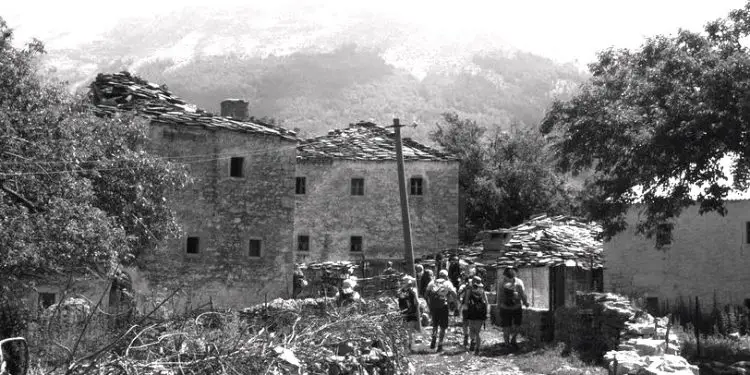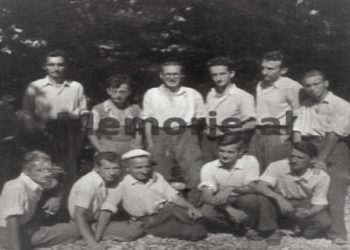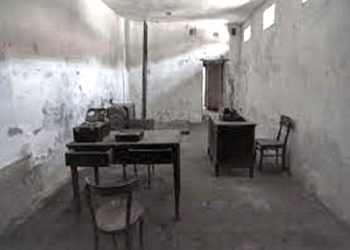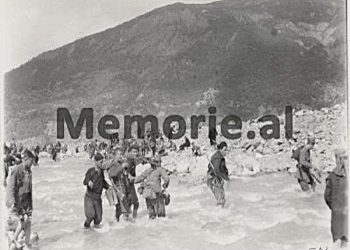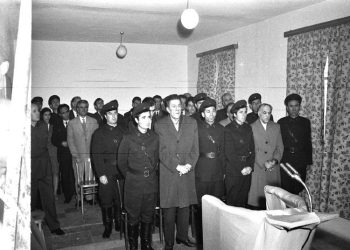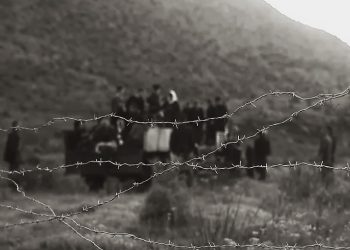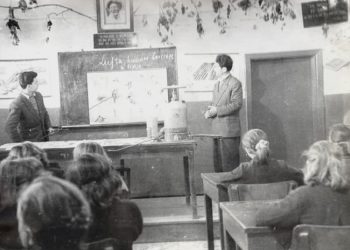A Century Ago, Albania in the “Catholic Encyclopedia”
Memorie.al / A document from 1907, excerpted from the “Catholic Encyclopedia,” contain a lot of interesting, known, and unknown information that sheds more light on the roots of Albanians. It includes an assessment of how the Western world viewed them, a description of their customs and traditions, the preservation of their old pre-Ottoman faith, and much more. This transports us to the atmosphere of those times, almost exactly a century ago. The author of this compilation is Elizabeth Christitch, who based her work on writings and documents from that period, adding at the end that she did this in memory of the great Albanian humanist, Mother Teresa.
The compilation begins by discussing the geographical position of Albania, which at the time had not yet been finalized as a partition among its neighbors and was under Turkish rule. Specifically, the author writes: “Ancient Epirus and Illyria is the westernmost country in Europe occupied by the Turks. It stretches along a maximum North-South longitudinal line of 290 miles and a width of 49 miles. To the West and Southwest, it is bordered by the waters of the Adriatic and Ionian seas.”
“Roughly, it is divided into three regions: Upper Albania, which stretches from the border with Montenegro to the Shkumbin River; Lower Albania, or Epirus, from the Shkumbin to the Gulf of Arta; and Eastern Albania, which extends to the east of the Shar-Dagh mountain range. It is a mountainous and rugged territory, with some mountains reaching over 8,500 feet, and it has only one flat surface worth mentioning, that of Shkodra (formerly ancient Scodra or Skodra), which also holds the lake of the same name, fed by the Drin River.”
“Many rivers flow from the harsh and untrodden heights to empty into the Ionian Sea: Mati, Shkumbin, Erzen (Ergent) or Devoll, Vjosa (Voynassa), Kalamas. Albania shares with Greece the unique phenomenon of underground rivers; the waters of Lake Ioannina flow through one of these underground streams and channels to the Gulf of Arta, which feeds the myth that this is the ‘entrance to the underworld’ of the ancient Greeks. The country is surrounded by ‘Cyclopean’ ruins.”
“In the region of Lake Ohrid (Ochrida) and Lake Prespa (Presba), there are passages that cut through the mountains, which enable communication between Albania and Macedonia. The Turkish post currently follows the old Roman Egnatia road from Durrës (ancient Dyrrachium) to Thessaloniki, passing through Bitola.”
“A little further down, between Gramoz and the Pindus mountain ranges, a deep gorge allows communication with the road from Ioannina to Larissa.’Mavropotamas,’ or ‘Acheron,’ once received the flows of ‘Cocytus’ and ‘Phlegeton,’ which have now disappeared. The land is not valuable for agricultural cultivation, and exports are few, consisting primarily of hides, tree bark for dyeing, and tobacco.”
“The text further discusses the economic potential of the Shkodra region with the Buna River, but also highlights the obstacle and lack of orientation and vision for this from the Ottoman regime, still present in Albania. ‘If the Buna River (Boyana) were navigable, Shkodra could thus be connected to the sea, and trade would certainly precede a process that would bring progress in every field; but the Ottoman regime hinders these efforts.'”
Albanians, Providers of Brave Men
The description of the origin and special qualities of Albanians as a brave people is very interesting, as is the origin of the penetration of Christianity into the Albanian mountains. “The Albanians,” it says, “(more of an ethnographic term than a geographical one) is called Arnauts (Arnaoots, Arnaouts) by other Balkan peoples; they call themselves ‘Skipetar’ or ‘Highlanders.’ They claim to be descendants of the Epirots and Illyrians and, like the latter, have always been inclined towards the spirit of war.”
“After being conquered by the Romans in the Illyrian Wars, the tribes of this region later supplied the empire with the best soldiers, and many emperors were of Illyrian blood (Freeman, The Illyrian Emperors, Historical Essays, London, 1892, III, 22-68). Christianity most likely penetrated those harsh mountainous areas through Roman soldiers and traders from Epirus and Macedonia; it remains unclear whether traces of early apostles have survived in the ruins of the Roman state. After the collapse of the Roman Empire, the Illyrian population was gradually pushed south by the Slavic invasions, becoming known as ‘Albanians,’ where they were for a long time subject to the religious schism of Constantinople (Orthodoxy), then fell under Serbian rule, and finally, in 1336-1356, became a province of the medieval Serbian Empire, under the rule of Tsar Stefan Dušan.”
Skanderbeg, World Famous
The text then approaches the era of Skanderbeg, which the author certainly couldn’t ignore, stating: “After the collapse of his empire, and after the Battle of Kosovo in 1389, the victorious Turks seized the entire country, but Prince Gjergj Kastrioti (George Castriota), the famous ‘Scanderbeg,’ also known as Iskander Bey, or Prince Alexander, managed to maintain an intact sovereignty in Upper Albania for about a quarter of a century (1443-1467).”
“This hero, whose legendary deeds are well known, was raised as a Muslim at the court of Sultan Murad II, to whom he was given as a hostage by his father, an Albanian nobleman; but after gaining fame and glory in the service of the Sultan, the ‘call of his own blood’ took hold, and he managed to lead his people and embrace Christianity. He defeated the Turkish armies in several clashes and battles and for a time secured a peace with favorable terms for himself. But, encouraged by the Pope and the promise of help from Venice, he attacked the Turks again and achieved other victories. After his death in Lezhë (Alessio 1467), the Sultan declared: ‘Now that the locals have lost their sword and shield, which can now save them from my wrath?'”
Albanians under Turkey: Privileged
While discussing the roots of Ottoman domination in Albania, the author emphasizes the fact that although Albanians had to obey the authority of the Sublime Porte, they were never fully subjugated to the Turks. They were often treated more as allies than vassals, enjoying privileges at the time. In addition, they were allowed not to pay taxes, which were known to be a heavy burden on the small agricultural economies of the Balkans.
“The Albanians began to become disorganized and finally submitted (in 1479) to Muslim domination. However, they were never fully subjugated, and even today, they are treated more as allies than as subjects. They now support and supply the Turkish army with the best soldiers, just as they once did with the legions of Rome, and are exempt from taxes and compulsory military service. As volunteers, they receive good wages and enjoy many privileges.”
Religion, Albanians, and Proverbial Morality
In an important paragraph, the author also focuses on the religious divisions and affiliations of Albanians, their puritanical customs and morality, which are described as “proverbial,” and the devotion of the Catholic population to the faith of their ancestors. The text states: “While many tribes have embraced Islam and others still belong to the Greek schism (Orthodoxy), the best part of the population is Catholic, and while they have traditional customs and a primitive way of life, they practice their faith with devotion. The puritanism of their morality is proverbial throughout the Balkan Peninsula, and the zealous Austrian and Italian missionaries have found more than favorable conditions to teach their lessons.”
“In one paragraph, it is also emphasized that Albanians, although Christian, had to adopt ‘new’ customs and traditions brought by the Turks. The text simply highlights this fact without dwelling on the reasons for this phenomenon. It is written that ‘the clans and tribes who successfully resisted the Muslim regime and kept their faith alive have nevertheless adopted many Muslim customs.'”
Albanian Language and Newspapers
“Schools have been opened in all villages by Franciscan and Jesuit fathers, but the spread of learning and education has been hampered by the lack of a unified and grammatically organized language. Many attempts have been made to establish an alphabet, but none of them have yet succeeded in being applied, as there are difficulties in adapting the spoken sounds to the letters of any of the European alphabets.”
“A cultured Albanian, for this reason, mostly uses Romanian, Greek, Serbian, or even Italian as a means of communication with the outside world. An Albanian newspaper has been launched in Bucharest and another in Belgrade. In the homeland itself, there is no attempt at any newspaper in the native language, and the periodicals most often found in large cities are of a religious nature and in Italian.”
The Condition of Catholic Albanians, Franciscans, and Austrians Have Done More
“For four centuries, Catholic Albanians have bravely defended their faith, greatly helped by Franciscan missionaries, especially since the mid-17th century, when terrible persecutions by their Muslim overlords began to cause unrest among them in this regard in many villages, especially among the Greco-Orthodox schismatic. The College of Propaganda in Rome was especially active and far-sighted in providing moral and religious support to Catholic Albanians.”
“During the seventeenth and eighteenth centuries, in particular, it took care to educate young clerics to perform services in Albania and to send them there on missions, thus contributing then and now, also, with their support and that of their churches, in which the good work done so far is preceded by the help of the Austrian government, which gives about five thousand dollars annually for those missions, to improve their work as protectors of the Christian community under the authority of Turkey.”
“The legislation of the Albanian church was reformed by Pope Clement XI, who decreed the preservation of ecclesiastical rights (1763) by the Archbishop of Tivar (Antivari), with whose help a national holy synod was also established. Its decrees were printed by the Propaganda in Rome (1705) and reformulated in 1803 (Coll. Lucensis Conc. Recent., I, 283 sq.). In 1872, Pope Pius IX called a second synod centered in Shkodra, for the renewal of its ecclesiastical life and that of the people in general.”
“In accordance with Austria’s interests in Albania, it can be said that it is precisely the Austrian ambassador who holds the ‘Berat,’ or the civil document of institutional power for the Catholic bishoprics of Albania (Neber, in K. L., XI, 18, 19) from the Sultan. Albania is divided into several ecclesiastical provinces:
(1) Tivar (or Antivari), since 1878 already part of the Principality of Montenegro, which since 1886 has had low-level priests or none at all and is separated from Shkodra, with which it was connected since 1867 on equal terms; (2) Shkodra (Scutari), with the dioceses of Lezhë (Alessio), Pulat (Pulati), Sapa (Sappa) and since 1888, with the Abbey of St. Alexis in Orosh; (3) Durrës (Durazzo); (4) Skopje (Uskup).”
“The last two have no head priests and thus depend directly on the Holy See. A seminary, founded in 1858 by the Archbishop of Shkodra, was destroyed by the Turks but was later re-established in the territory administered by the Austrians and thus placed under the protection of the empire.”
Women, Dress, and a Semi-Barbarian Race, Albanian Catholics, Very Devout in Worship
“In Shkodra, Catholic women, as well as Muslim women, appear on the streets covered. Albanian women work tirelessly in agriculture or at home, so almost all household work is continuously managed by them, as the men are regularly active as warriors in the Albanian or Albanian-Turkish gangs. Women wear tight-fitting jackets, in a light color combined with black, and their heads and chests are covered on festive and banquet days with a large mass of gold-plated chains and gold.”
“In Catholic churches, women appear with uncovered faces, and the lower class even generally takes off their shoes outside the door. The service in the Catholic cathedral of Shkodra is very impressive, although extremely primitive. The bright red color predominates in the altar decorations, as well as in the clothing of the believers and worshipers of God. It is impossible to describe in words the devotion of the Albanian Catholic, as they have remained completely strict in their simple, but heartfelt and devout way of worshiping God and their faith.”
“The admirable work of the friars in extinguishing the old custom of blood feuds is one of the main factors in the evolution of this semi-barbarian race. While every other race in the Balkans, with the exception of the western Serbs, called Croats, embraced the schism, the Catholic faith remained secure in the harshness offered by the terrain and people in Upper Albania.”
Albanians, Conversion and Nationalism, “Mirdita,” Marriages with Beautiful Turkish Girls
“To convert to Islam, this once meant becoming an honorable warrior, while to remain a Christian meant becoming a slave, deprived of carrying weapons, and so it was easier for the majority of Albanian tribes and clans to change their religion. The main doors in Upper Albania, ‘Shoshi’ and ‘Mirdita,’ have been and are the pioneers of Albanian nationalism and Catholicism.”
“A long time ago, the ‘Mirdita’ liked to keep Turkish girls from good families, and after baptizing them, they made them their wives, so there is a strong line of Turkish blood in the veins of today’s Mirdita Catholics. This tribe has enjoyed special privileges, such as a place of honor in the Turkish army, under the command of their own chief. In accepting the division of command with Muslim troops, this has also led to an increase in the sense of nationalism and of serving the Sultan with the same devotion when he calls them to arms. The ‘Mirdita,’ numbering about 40,000 and with a main center of about four thousand houses, Orosh, are treated on equal terms in their relations with the Sublime Porte.”
Albanians, This Brave and Talented Race
“It was an Albanian who led the Greeks in their war for independence, and it was again an Albanian who commanded the Turkish army that was sent to suppress the rebellion. The King of Naples kept at his disposal a regiment of Albanians called the ‘Royal Macedonian Regiment,’ and the famous resistance of Silistria in 1854 happened because of the unparalleled bravery of the Albanians. Courage and heroism are innate qualities of this unique and talented race.” / Memorie.al




